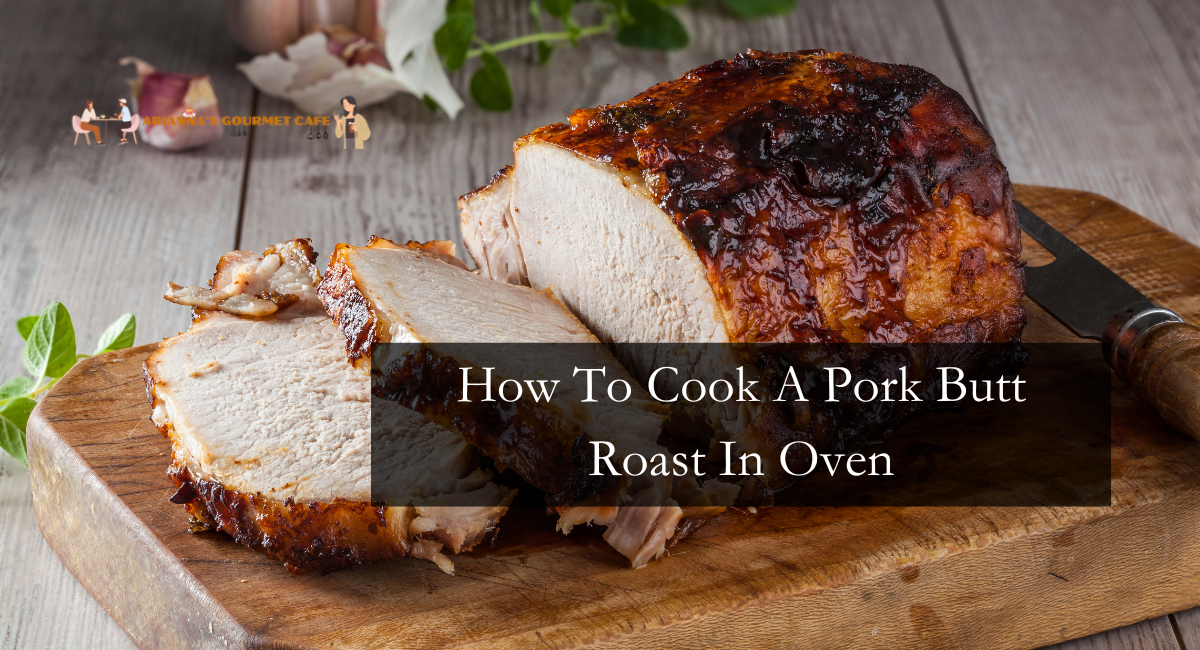Mastering roasting a succulent and flavorful pork butt roast in the oven is a culinary achievement worth pursuing. Using the proper techniques, this versatile cut of meat from the pig’s shoulder can be converted into tender, mouthwatering dishes. This article, will explain how to cook a pork butt roast in oven.
What Is A Pork Butt Roast?
Pork butt is not derived from a pig’s rear end, despite its moniker. The butt roast cut is derived from the broader shoulder park. It has an abundance of fat marbling, making it the ideal flesh for slow roasting.
You’ll often see many similar cuts of meat from the same area designated as pork shoulder, Boston butt, or picnic roast. Possibly a combination of the shoulder and the butt. Each of these cuts is widely used in pulled pork recipes.
For this recipe, we will focus exclusively on the boneless butt roast/shoulder butt roast and prepare it more traditionally.
Ingredients
- 4-5 pounds (1.8-2.3 kilograms). Roasted pork shoulder, also known as pork butt roast.
- Salt and finely ground black pepper for taste
- Optional spices include garlic powder, onion powder, paprika, dried thyme, rosemary, and your preferred marinade.
How To Cook A Pork Butt Roast In Oven
Instructions
1. Preparing The Pork Shoulder
- Prepare the oven to 325° F (163° C).
- Remove the pork butt roast from its packaging and place it on a clean cutting board to begin.
2. Reduce Extra Fat (Optional)
- While some fat is essential for flavor and moisture, you can trim any excessive fat from the surface of the roast if desired.
- Leave a thin layer of lard for flavor enhancement.
3. Season The Pork Shoulder
- Liberally sprinkle salt and freshly ground black pepper over the entire surface of the roast. This base seasoning enhances the natural characteristics of pork.
- You may add additional seasonings or herbs to flavor.
- Standard options include garlic powder, onion powder, paprika, dried thyme, dried rosemary, and a rub of your choosing.
- Massage these seasonings into the meat evenly.
4. Searing The pork Is recommended But Optional
- Before roasting, searing the pork butt can enhance the flavor and create a lovely crust. In a Dutch oven or oven-safe skillet, A tiny amount of oil should be heated over medium-high heat.
- When the oil is heated, add the seasoning pork roast and sear for 3 to 5 minutes each side on all sides.
5. Preparation For Roasting
- If a skillet has been used for searing, it can also be used for roasting in the oven. Alternatively, the roast can be transferred to a roasting pan or oven-safe dish.
- Cover the roast with aluminum foil or the lid if your culinary vessel has a lid.
6. Slow Roasting Method
- Slow-roast the roast at 325°F (163°C) in a preheated oven. Preparation time should be about 20 to 30 minutes per pound of beef. To evaluate doneness, use a meat thermometer to monitor the internal temperature of the roast.
- Without contacting the bone, insert a meat thermometer into the thickest portion of the roast. The pork is typically ready for shredding when its internal temperature reaches 190-205°F (88-96°C), depending on the desired tenderness.
7. Glaze (Optional)
- Occasionally, basting the roast while it is cooking will add moisture and flavor.
- Use the fluids from the roast or add flavorful liquids like apple juice, chicken broth, or your preferred marinade.
8. Relax And Destroy
- Remove the roast from the oven once the desired temperature has been reached. Allow it to rest for at least 15 to 20 minutes, covered loosely with aluminum foil. This resting period allows the fluids to redistribute throughout the meat, keeping it moist and tender.
- After resting, shred the pork with two forks or your hands (if the roast has chilled sufficiently). It should readily separate into tender, succulent strands.
9. Serve And Delight
- You can serve your oven-roasted pork butt roast in numerous methods.
- It is ideal for creating pulled pork sandwiches, tacos, salads, and any other mouthwatering dishes.
- If you appreciate barbecue flavors, you can also add your preferred barbecue sauce for an additional layer of flavor.
Tips
- Place your roast in an airtight container and refrigerate it for up to four days.
- Allow a roast to cool completely before wrapping it tightly in heavy-duty aluminum foil and storing it in a freezer bag to freeze. You can store it in the refrigerator for up to 6 months; thaw completely before reheating.
- To reheat, place leftovers on a baking sheet with a rim, sprinkle with water or bouillon, and cover with aluminum foil. Bake it at 300°F (150°C) until it is sufficiently heated.
Thanks for reading.










